Key takeaways
- Storytelling in photography involves capturing emotions and narratives beyond the visual elements of a scene, using composition, light, and timing to connect with viewers.
- Key elements include careful composition, experimenting with light and color, and capturing fleeting moments to enhance the story being told.
- A personal approach focuses on intuition and establishing a connection with subjects, inviting viewers to interpret and engage with the narrative.
- Practical tips emphasize simplicity, sequencing images for a cohesive story, and building rapport with subjects to reveal authentic narratives.
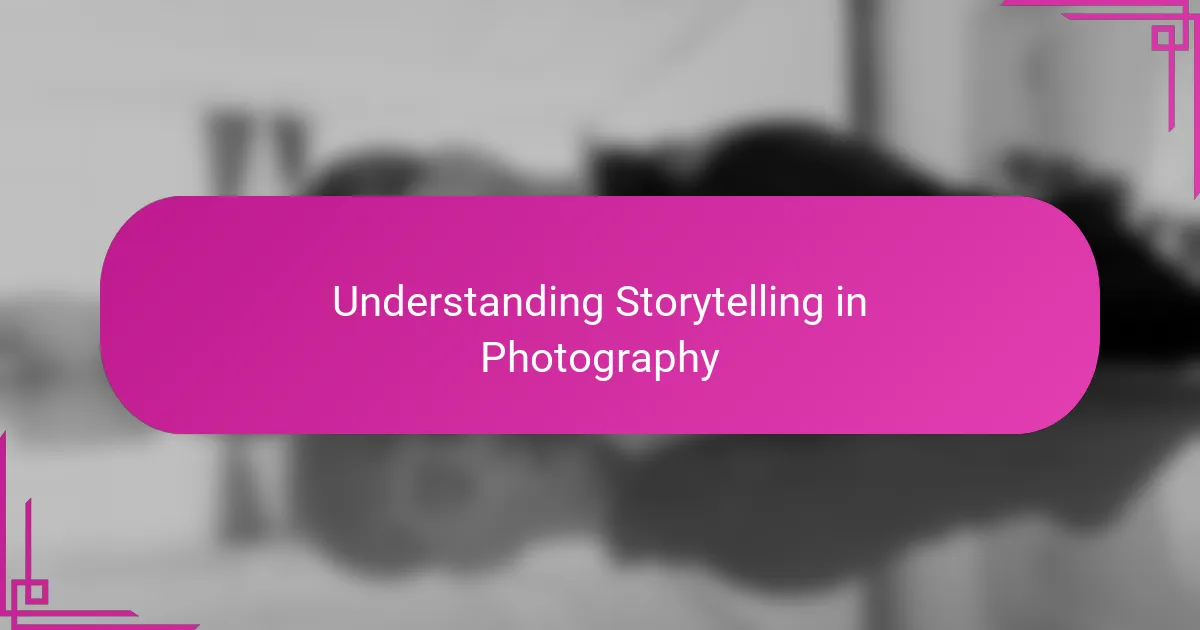
Understanding storytelling in photography
Storytelling in photography, to me, is more than just capturing a scene; it’s about freezing a moment that speaks volumes beyond the frame. Have you ever noticed how a single image can evoke emotions, provoke thoughts, or tell a whole story without a single word? That’s the magic I chase every time I click the shutter.
When I shoot, I’m not just documenting reality—I’m weaving narratives through composition, light, and timing. Sometimes, I find the story in the subtle expressions of a subject or the way shadows play across the background, and these small details often carry the weight of the entire image.
I often ask myself: What is this photograph saying? What emotions does it awaken? Understanding storytelling in photography means connecting deeply with both the subject and the viewer, creating images that resonate and invite curiosity long after they’re seen.
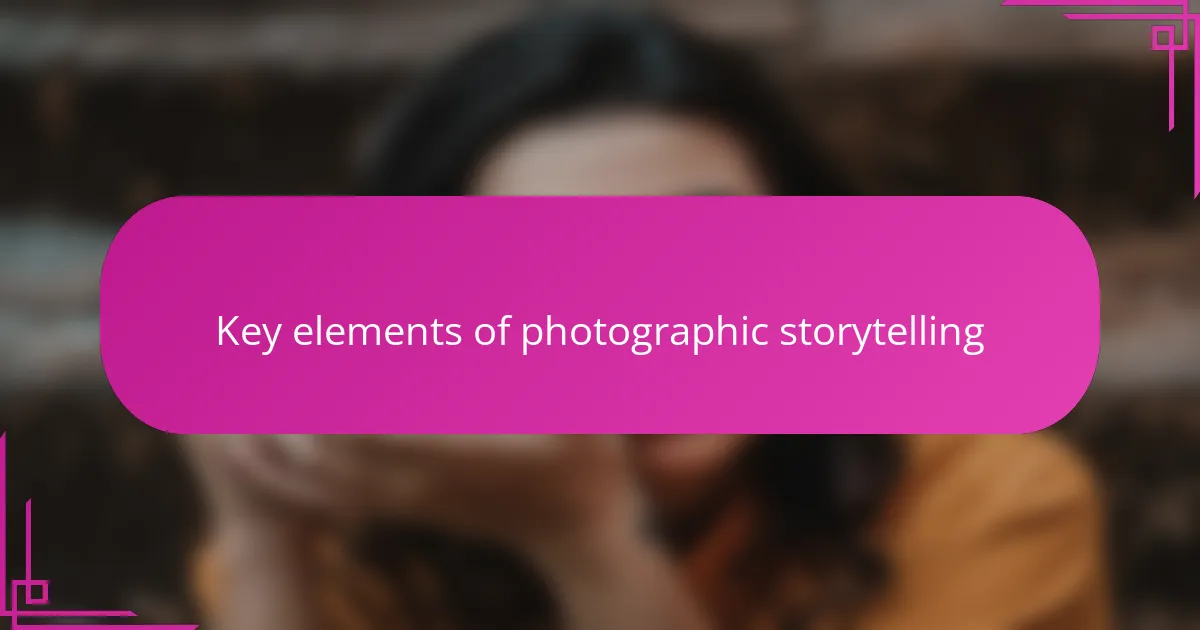
Key elements of photographic storytelling
When I think about the key elements of photographic storytelling, composition immediately comes to mind. How I frame a shot can guide the viewer’s eye and highlight what’s truly important in the story. I recall a time when a simple change in angle transformed an everyday scene into a powerful narrative about loneliness.
Light is another element I never overlook. It’s incredible how natural light can add mood and texture, subtly revealing emotions that words might miss. Have you noticed how soft morning light can make a portrait feel intimate, while harsh shadows can create tension? Playing with light helps me set the tone without saying a word.
Then there’s timing—the exact moment I press the shutter often defines the story. Capturing a fleeting expression or a dynamic gesture is like catching a heartbeat in an image. I’ve learned to be patient, waiting for those unpredictable moments that turn a photograph from a mere picture into a vivid story.
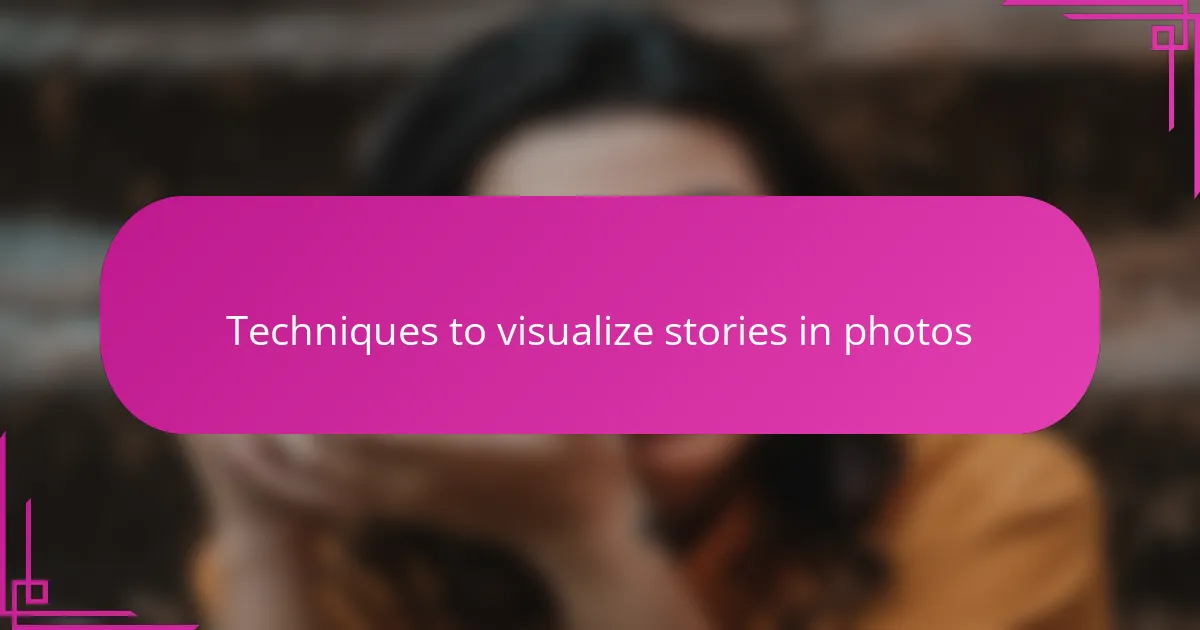
Techniques to visualize stories in photos
Visualizing stories in photos often begins with the deliberate use of perspective. I like to experiment with unusual angles or framing, because shifting the viewer’s point of view can reveal hidden layers of the narrative. For instance, shooting from ground level once gave me an unexpected sense of vulnerability in a portrait—something I hadn’t planned but immediately felt essential to the story.
Color and contrast also play a huge role in how I express a story visually. Have you ever caught yourself drawn to an image because of its bold reds or soft pastels? That’s no accident. I use color deliberately to evoke emotions—warm tones for comfort and closeness, or stark blacks and whites to suggest conflict or nostalgia. It’s like painting with light and shade rather than brushstrokes.
Sometimes, silence speaks loudly through minimalism. I often strip away distractions, focusing on a single subject or detail, because negative space can amplify the story just as much as what’s present. When I captured a lone tree standing against a vast empty sky, I wasn’t just photographing nature; I was telling a story about resilience and solitude without a single extra element to explain it.
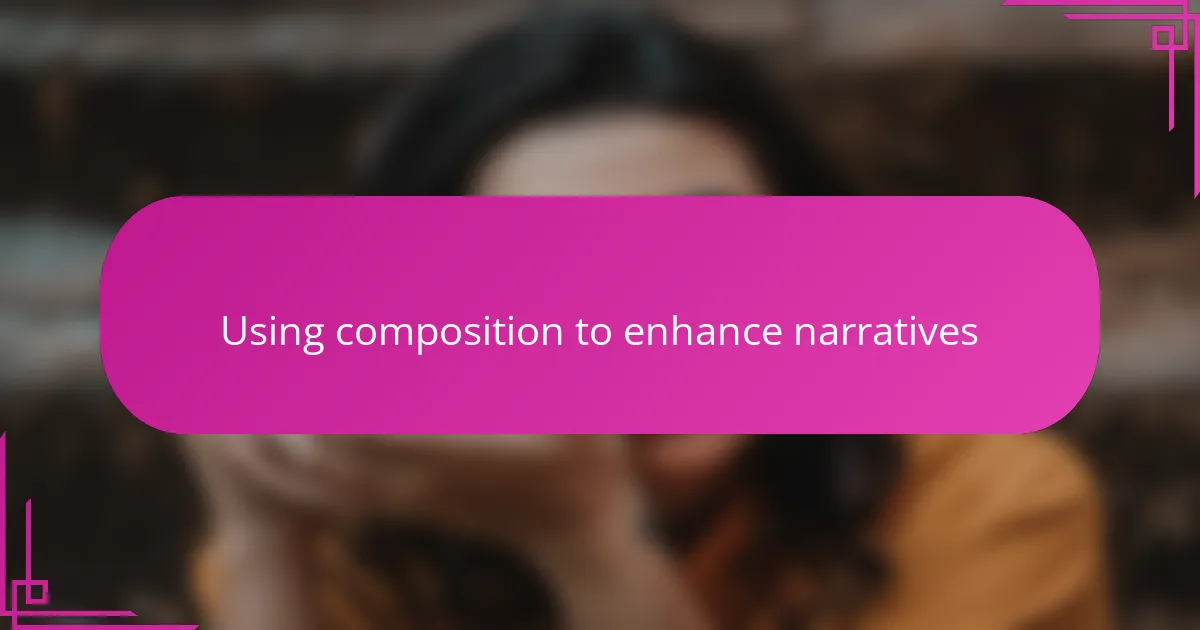
Using composition to enhance narratives
Composition is where the story truly takes shape in my photographs. I often think about how lines, shapes, and balance can lead the viewer’s eye exactly where I want—like a guided tour through the emotions I want to share. Have you ever noticed how a diagonal line or a carefully placed subject can make a scene feel more dynamic, or even tense?
Sometimes, I play with symmetry and asymmetry to evoke different moods. A perfectly centered subject can feel calm and stable, while an off-center placement might introduce a sense of imbalance or mystery. It’s fascinating how these subtle choices in composition shape the narrative without adding a single word or element.
One moment that sticks with me is when I framed a child against a blurred cityscape, using the rule of thirds to isolate innocence amidst chaos. That choice in composition wasn’t accidental—it was my way of telling a story about hope and resilience in a hectic world. It’s in moments like these that composition becomes my silent storyteller.
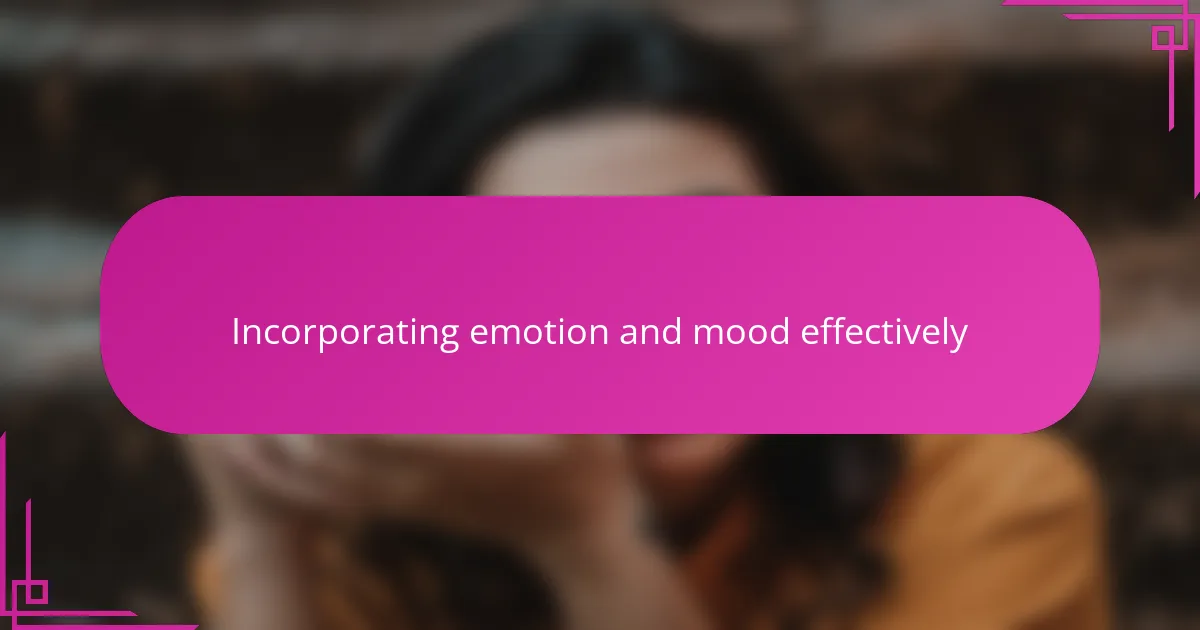
Incorporating emotion and mood effectively
Emotion and mood are the heartbeat of any photograph, in my experience. I often find that lighting alone can pivot a scene from joy to melancholy—or vice versa—without changing a single thing in the frame. Have you ever captured a smile that felt joyful one moment but haunted the next? That contrast is where emotion truly lives.
Sometimes, I focus on subtle expressions or fleeting gestures, because that’s where raw emotion sneaks in unnoticed. It’s not always about big smiles or tears; sometimes a glance or a slouched posture conveys more story than words ever could. I remember a shoot where a slight furrowed brow told a deeper tale of vulnerability I hadn’t expected to find.
I also lean heavily on color tones to set the mood. Warm hues can wrap a photo in comfort, while cooler tones might introduce distance or introspection. It’s like painting feelings with my camera, choosing colors that resonate with the story I want to tell. Do you ever notice how a change from golden sunlight to overcast skies can alter what you feel when looking at a photo? That’s the magic of mood working quietly behind the scenes.
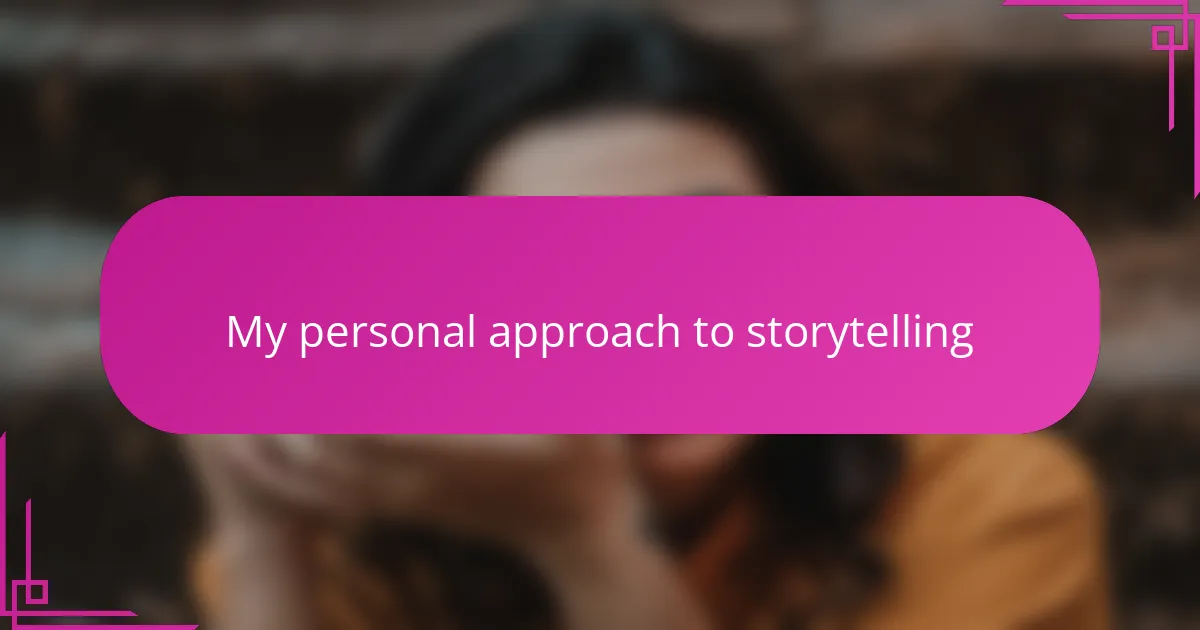
My personal approach to storytelling
When I approach storytelling in my photography, I focus on the intimate connection between the subject and the story I want to convey. It’s never enough to just capture what’s visible; I aim to reveal what’s beneath the surface, whether that’s a fleeting emotion or a subtle interaction. Have you ever noticed how a quiet moment can sometimes speak louder than a dramatic scene? That’s exactly where I try to place my lens.
I also trust my intuition a lot during shoots. There have been times when I didn’t plan to tell a specific story, but a certain expression, light shift, or angle pulled me in and reshaped the narrative completely. It’s like the photograph guides me just as much as I guide it. Does trusting that spontaneous feeling come naturally to you, or is it something you have to practice?
Above all, I want my images to invite viewers into a dialogue. When someone pauses at one of my photos and wonders about the story behind it, I know I’ve succeeded. It’s about creating layers—offering enough clues to ignite curiosity but leaving space for personal interpretation. Isn’t it incredible how stories unfold differently for each person looking through the same frame? That’s the beauty of storytelling in photography for me.
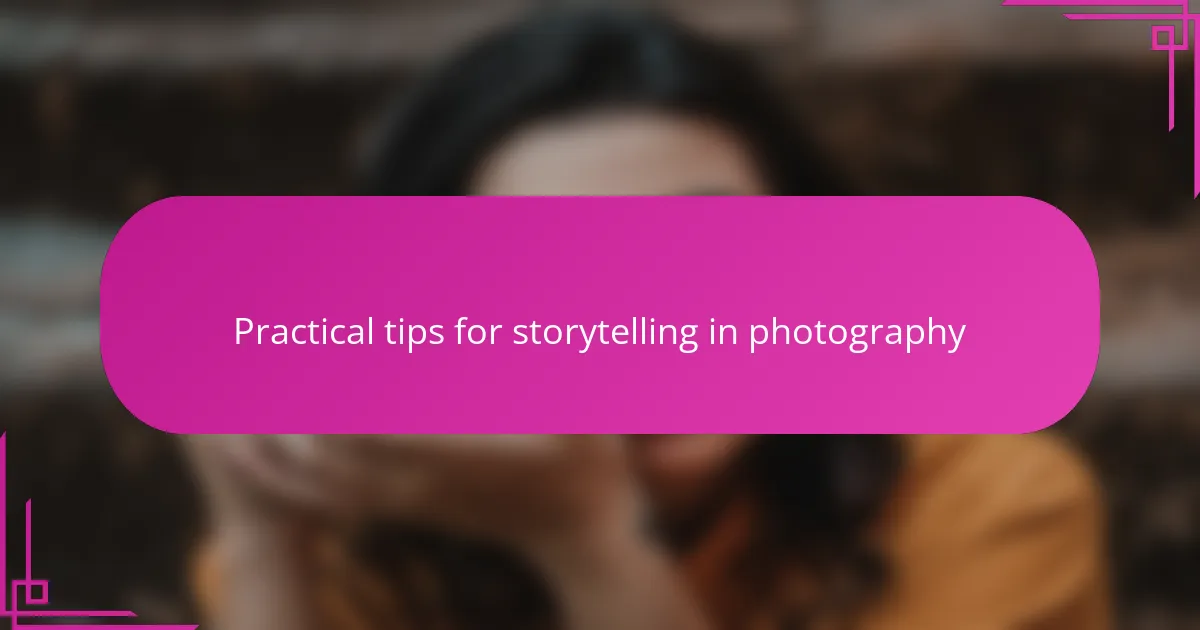
Practical tips for storytelling in photography
One thing I always remind myself is to keep the story simple and focused. Have you ever struggled with overcrowding a scene? I’ve learned that stripping down distractions and honing in on one key element can make the narrative much clearer and more powerful. Sometimes, less really is more.
I also make it a habit to think about sequencing when shooting a series. Just like telling a story with words, the order of images can build tension, provide context, or offer resolution. On one project, arranging photos from close-up details to wider environmental shots helped me take the viewer on a journey I hadn’t initially imagined.
And here’s a tip I find invaluable: engage with your subject before shooting. The stories I capture often emerge when there’s a genuine connection, and that takes a little time and patience. Have you noticed how people’s expressions change when they feel seen and understood? That’s when the real narrative surfaces, and the camera becomes a witness rather than just a tool.